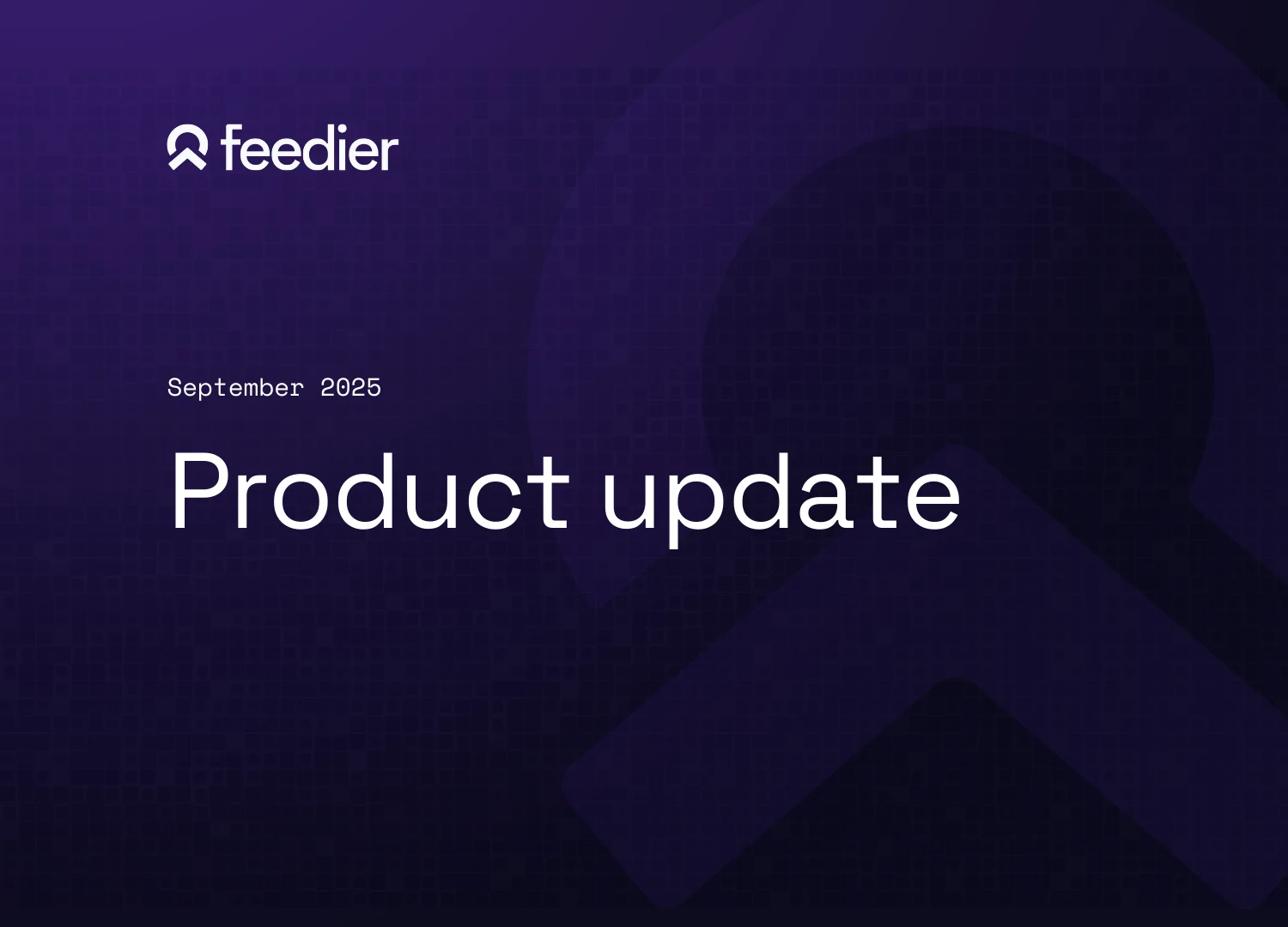
Why Digital Projects Only Succeed Through People

Digital transformation is everywhere. Every company is demonstrating its desire to modernise its tools, increase efficiency and use data to make better decisions.
But behind the grand speeches and ambitious roadmaps, a more nuanced reality is emerging on the ground.
The illusion of 100% technological digital transformation
Over the past five years, the business landscape has undergone profound changes driven by two accelerating trends: the widespread adoption of remote working in the wake of COVID-19 and the explosion of SaaS, integration, and artificial intelligence tools.
Never before have technological investments been so massive. CRM, collaborative platforms, feedback tools, BI, automation... Each department has seen its own digital ecosystem flourish. On paper, the promises are appealing: efficiency, autonomy, scalability.
And yet.
How many projects stagnate despite choosing a relevant solution? How many licenses remain underutilized? How many strategic initiatives fail to make the leap to actual adoption in the field?
The real issue isn't the technology. It's how it's deployed, embodied, and brought to life.
"It’s not the tool you choose that makes the difference, it’s what you do with it.”
In short: a digital project cannot succeed without human intelligence. It's a matter of governance, attitude, and education—not just technical stack.
And the most critical phase, which is often overlooked, is not the selection or configuration phase. It is the phase that begins after delivery: the run, the appropriation, the maturation. This is where everything is won or lost.
Human blind spots in digital projects
By focusing on the technical stack, many digital projects neglect the human dimensions that determine their success. However, it is precisely these gray areas that undermine adoption and value creation.
Onboarding that is too technical and not human enough
All too often, onboarding a new solution boils down to a functional checklist: configure, connect, provide quick training... Then move on to something else.
But good configuration has never been enough to guarantee adoption. The user experience begins where the product sheet ends. Without education and progressive support, the tool will continue to be perceived as just another IT project.
Misaligned stakeholders
Management, business lines, IT: everyone projects their own expectations onto the project. These expectations are sometimes contradictory and often implicit.
Without proper initial alignment—and regular dialogue thereafter—misunderstandings arise. The project becomes a vague compromise, where everyone is partially disappointed.
The myth of user autonomy
"We give them access, and they will teach themselves.”
This belief is persistent... and extremely ineffective. Adoption cannot be decreed: it is built step by step, with meaning and contextualized practices. This is especially true in multi-site organizations or those with high staff turnover.
A coasting run
Once the project is “delivered,” many teams disengage. No more active management, no more coordination, no more feedback loops. The result: the solution deteriorates, users lose interest, irritants multiply... without anyone reporting them.
Turnover, the silent enemy of projects
On both the client and service provider sides, departures cause disruption. The memory of the project fades. What was clear at T0 becomes confusing at T+6 months. Without clear documentation or internal communication, the entire project loses its coherence.
Result: a digital project may appear to be “in place” but remain largely underutilized. Declining usage, uncertain ROI, growing frustration... leading to complete disengagement.
So how can we avoid this scenario? By reinvesting where leverage is strongest: in people.
Reinvesting in people to ensure the long-term viability of projects
Successful digital projects are not just about delivering a functional solution. They are about creating the conditions for sustainable, vibrant, and useful adoption. This requires rethinking certain management approaches to put people back at the center of the process. Here are five concrete levers that have been tested and proven in the field.
1. Involve the right people from the outset
Just because a project is well defined does not mean it is well designed. Too often, end users are absent from the design phases, in favor of a top-down approach focused on the needs expressed by management or technical experts.
Bringing in the right people—operational staff, field representatives, support functions—from the outset makes all the difference. It allows you to identify real pain points, anticipate objections, and avoid over-specifying too early on.
A discovery approach focused on uses rather than tools makes all the difference.
2. Abandon the idea of a “turnkey” onboarding process
A training kit, a demo, a PDF support document... and good luck? This model is outdated.
Adopting a tool takes time. You need to create regular points of contact, adapt the pace of learning, and measure out messages. Short, interactive formats (Q&As, focus groups, user tutorials) are often more effective than top-down training.
Onboarding becomes a common thread, not an isolated milestone.
3. Monitor and promote usage over time
What isn't measured... isn't managed. Once the solution has been deployed, the classic mistake is to settle for connection data or support tickets.
Good usage monitoring goes further: it combines quantitative data (volume, frequency, activated features) with qualitative signals from the field. The goal? To identify stagnant usage, teams that are falling behind, and points of friction.
And above all: set up regular activities—business reviews, user committees, shared updates—to create a collective dynamic.
4. Focus on internal relays
In every organization, there are always users who quickly master the tool, test unexpected uses, or act as translators between business units and IT. They are gems.
Rather than centralizing everything, it is more effective to structure a network of “champions”: one per site, per BU, or per critical area. These individuals become key contacts, training relays, and valuable sources of feedback.
By promoting them, we establish a culture of usage spread by peers—which is much more powerful than top-down communication.
5. Use feedback to drive adoption
A user experiencing difficulties will rarely mention it spontaneously. However, a structured listening system makes it possible to identify subtle signals, specific obstacles, and implicit needs.
This is where a platform like Feedier comes into its own: by automatically analyzing real-time feedback, detecting recurring irritants, and suggesting contextualized action plans—by entity, channel, and user profile. We're not talking about overall scores or general trends here, but actionable insights where concrete actions can be taken quickly.
For example, if a field team repeatedly expresses confusion about a new feature, it is possible to initiate a targeted training session or adjust the documentation. If several entities report navigation difficulties, this information is fed directly into the product backlog. Feedback no longer remains in an Excel file or a static dashboard: it becomes a trigger for action, integrated into operational routines.
This is how we move from a delivery mindset to a guided adoption mindset.
Conclusion: People are the foundation of all useful technology.
We often forget that a digital solution, however effective it may be, is only valuable if it is used, shared, and embodied.
Without adoption, it becomes a cost center. With good human governance, it becomes a lever for transformation.
The success of a digital project does not depend solely on the robustness of the tool or the sophistication of the configuration. Above all, it is a process of adoption: creating buy-in, supporting usage, and making adjustments as you go along.
And this dynamic cannot exist without listening. Listening to end users. Listening to weak signals. Listening to feedback from the field.
Because it is by understanding what works, what gets in the way, and what needs to change—as closely as possible to reality—that we can anchor a solution in the daily lives of teams.
Why not start there? By listening to the people who use your tools every day.
Feedier helps you do just that.
The Ultimate Guide to the Voice of the Customer 2025

Florian is Marketing Manager at Feedier, the AI Customer Insights platform that turns feedback into action. He writes about CX, operations, and the real-world impact of user adoption.
Our articles for further exploration
A selection of resources to inform your CX decisions and share the approaches we develop with our clients.


